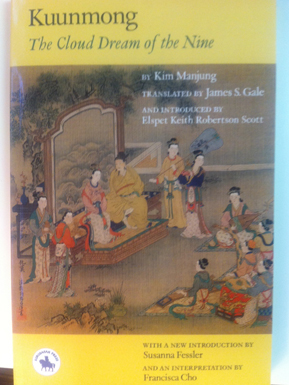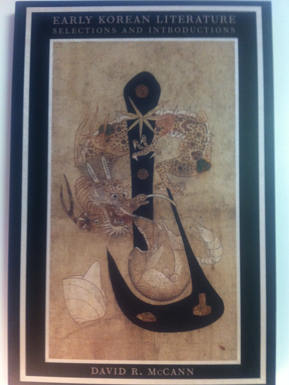CAS to Add Professorship in Korean Literature
Position will offer students new minor

This is a story about literature, summarized in the language of math: the two Koreas’ global importance + BU’s burgeoning Korean student and alumni bodies = a new professorship at the College of Arts & Sciences.
CAS will hire a scholar in Korean literature and comparative literature to complement its existing four-year instruction in Korean language. (There are also courses in Korean cinema and media.) Depending on the pace of a nationwide hiring search, the new professor could be teaching by the fall semester, says Virginia Sapiro, dean of Arts & Sciences.
The Korea Foundation, established by South Korea to create overseas professorships in Korean language and studies, will pay “a large portion” of the professor’s salary for the first three years, after which the University will take over, according to Sarah Frederick, a CAS associate professor of Japanese and acting chair of the modern languages and comparative literature department. The new literature instruction also will permit BU to offer a minor in Korean language and literature, she says.
The Korea Foundation has worked with BU before, Frederick says, subsidizing the dissertation research of an art history graduate student.
“I’m proud of the role CAS plays in providing a firm foundation to our profile as a global university,” says Sapiro. “Research and teaching in a carefully selected and well-supported set of languages and cultures is essential to any serious claim to global excellence, and I am delighted that we can elevate the presence of Korean language and culture as part of our outstanding offerings in Asian studies.”
The expansion of Korean instruction acknowledges several trends: South Korea’s ascent to a major world economy; recent tensions with North Korea, from the collapse of defense talks with South Korea to concerns about its nuclear drive; and rising interest in Korean studies in the American academy. According to the New York–based Modern Language Association, course enrollments in Korean language study nationally hit 8,511 in 2009, a 19 percent increase from three years earlier and the largest increase, after Arabic, in foreign language enrollment during the three-year period.
 With BU’s reputation for East Asian scholarship rising on the back of a critical mass of faculty experts, the new position “will fill a gap and enrich this discussion,” Frederick says. A specialist on Japanese women writers between the world wars, Frederick also cites BU’s South Korean undergraduate and graduate student population (at 655, second only to Chinese as the largest foreign contingent) and the fact that Korean is the ninth most commonly spoken language in the United States.
With BU’s reputation for East Asian scholarship rising on the back of a critical mass of faculty experts, the new position “will fill a gap and enrich this discussion,” Frederick says. A specialist on Japanese women writers between the world wars, Frederick also cites BU’s South Korean undergraduate and graduate student population (at 655, second only to Chinese as the largest foreign contingent) and the fact that Korean is the ninth most commonly spoken language in the United States.
“It is noteworthy that the number of students enrolled in Korean studies and language continues to grow and that over half of them are not descendants of Koreans,” says Yongmaan Park (GSM’82), chairman of the BU Alumni Association of Korea. “As more Boston University graduates, who will become the future leaders in many parts of the world, continue to have better understanding of the Korean culture, Korea will have more opportunities to receive its well-deserved status with a fair recognition in the world.”
“Cultivation of the Korean culture and literature program at BU, where the world’s finest students come to study, is very significant,” he adds, “for it can prompt other world-class universities to consider offering studies on Korea.”
“In terms of international politics and economics, the Koreas are very important,” says Frederick. “Attention to the cultural heritage of this great portion of the BU community makes sense.”
Rich Barlow can be reached at barlowr@bu.edu.

Comments & Discussion
Boston University moderates comments to facilitate an informed, substantive, civil conversation. Abusive, profane, self-promotional, misleading, incoherent or off-topic comments will be rejected. Moderators are staffed during regular business hours (EST) and can only accept comments written in English. Statistics or facts must include a citation or a link to the citation.